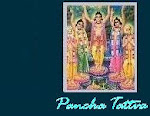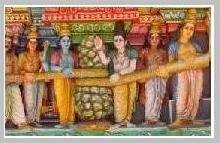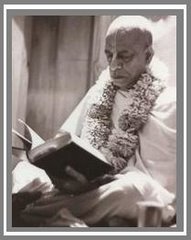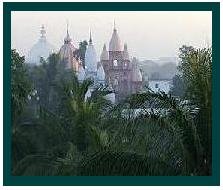

Brahma Samhita Chapter 5 Text 49
bhasvan yathasma-sakalesu nijesu tejah
sviyam kiyat prakatayaty api tadvad atra
brahma ya esa jagad-anda-vidhana-karta
govindam adi-purusam tam aham bhajami
sviyam kiyat prakatayaty api tadvad atra
brahma ya esa jagad-anda-vidhana-karta
govindam adi-purusam tam aham bhajami
SYNONYMS
bhasvan--the illuminating sun; yatha--as; asma-sakalesu--in various types of precious stones; nijesu--his own; tejah--brilliance; sviyam--his own; kiyat--to some extent; prakatayati--manifests; api--also; tadvat--similarly; atra--here; brahma--Lord Brahma; yah--who; esah--he; jagat-anda-vidhana-karta--the chief of the universe; govindam--Govinda; adi-purusam--the original person; tam--Him; aham--I; bhajami--worship.
TRANSLATION
I adore the primeval Lord Govinda from whom the separated subjective portion Brahma receives his power for the regulation of the mundane world, just as the sun manifests some portion of his own light in all the effulgent gems that bear the names of suryakanta, etc.
PURPORT
Brahma is two types: in certain kalpas when the potency of the Supreme Lord infuses Himself in an eligible jiva, the latter acts in the office of Brahma and creates the universe. In those kalpas when no eligible jiva is available, after the Brahma of the previous kalpa is liberated, Krsna, by the process of allotment of His own potency. creates the Brahma who has the nature of the avatara (descent) of the Divinity in the active mundane principle (rajo-guna). By principle Brahma is superior to ordinary jivas but is not the direct Divinity. The divine nature is present in a greater measure in Sambhu than in Brahma. The fundamental significance of the above is that the aggregate of fifty attributes, belonging to the jiva, are present in a fuller measure in Brahma who possesses, in a lesser degree, five more attributes which are not found in jivas. But in Sambhu both the fifty attributes of jivas as also the five additional attributes found in Brahma are present in even greater measure than in Brahma.




















